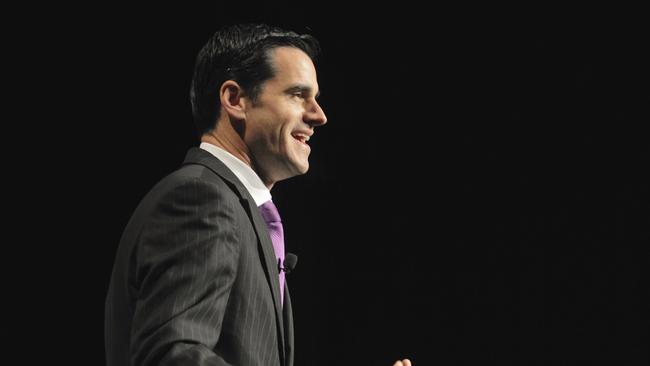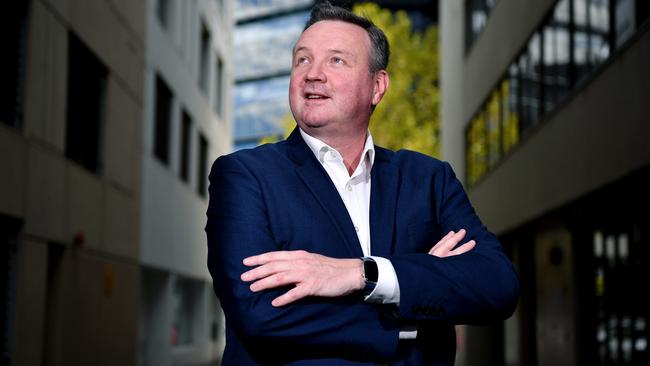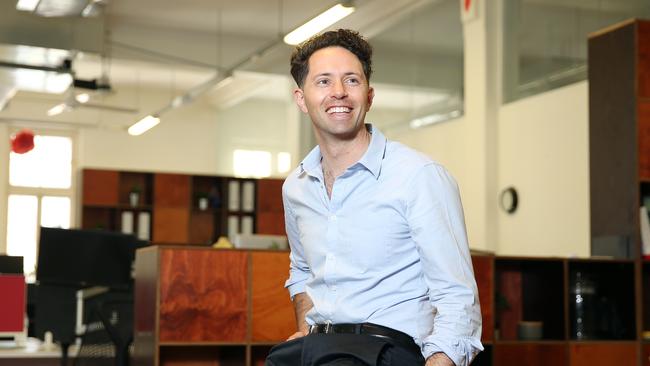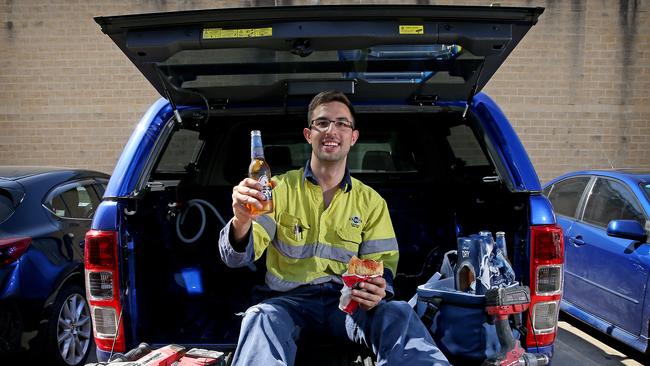Westie tradie equal of established money as fair go turns old order on its head
THE cashed-up tradie from the western suburbs is the new face of Sydney’s “middle class”, with experts saying workers in hi-vis are stealing the title from suit-wearers on the north shore.

NSW
Don't miss out on the headlines from NSW. Followed categories will be added to My News.
THE cashed-up tradie from the western suburbs is becoming the new face of Sydney’s “middle-class”, according to experts who say workers dressed in hi-vis are stealing the title from suit-wearers on the north shore.
While there’s still a “battler” constituency, social demographers say many Western Sydneysiders are now on equal or better financial footing than “old money” residents from affluent suburbs like Killara or Warringah.
“Australia is the land of the fair game — if somebody works hard and has a bit of nous they can get a leg up and make something of themselves,” social researcher Mark McCrindle told The Saturday Telegraph.
“The property boom has been a disruptor in creating opportunities, particularly in the west … where there’s been a lot of new development and infrastructure leading to value uplift and demand in areas where we’ve had skills shortages.”
In Ropes Crossing, 53km northwest of Sydney’s CBD, the median weekly household income is $2,028 — virtually on par with Warringah’s $2,095, according to 2016 Census data.
However, families in the trendy suburb of Bella Vista in the Hills Shire district are raking in almost $1,000 more at $2,942 per week — even trumping Killara’s $2,534.
Parramatta’s weekly household income is also on the rise, up over $400 from $1,314 in 2012 to $1,739 in 2016.
MORE NEWS:
Revealed: Emails sent to Rabbitohs over nude scandal
Finks boss accused of threatening to kill kids in home invasion
Ten-year golf club feud hits court
Mr McCrindle said there are now five social classes in Australia: “silver spooners”, “moneyed 2.0”, “aspirationalists”, “next-gen wealth” and “cashed-up tradies”.
He said it was significant that tradies were starting to outnumber high-flyers in suits in places symbolic of wealth like the Qantas lounge.
“In some of those places used to define wealth or someone with a bit of class … it’s the people in the high vis vests that sometimes outnumber the suits,” Mr McCrindle said.
A resident from the upper north shore might think they’re “definitely middle class” but Mr McCrindle said a blue-collar worker out west with a better cash flow or more expensive property was likely better off.

“If someone not only has some wealth in terms of their property but if they have a bit of cash, they could be living that middle-class lifestyle more than someone who has grown up on the north shore and has a private school education,” he said.
Western Sydney Business Chamber director David Borger said the region had enjoyed a “huge growth in wealth” over the two last decades but “it’s not always distributed equally”.
“If you count the number of luxury vehicles in Church Street Parramatta or frankly going around the local primary school I think most people would just be gobsmacked,” he said.
“But even to classify Western Sydney as one thing is a crock — every street can be different, frankly.”

Mr Borger said the demographic was shifting with many parents focused on securing the best education for their kids.
“I think you’re going to see more professionals and scientists, more highly educated sons and daughters of cashed-up tradies,” he said.
Mr McCrindle said cashed-up tradies typically drove souped-up utes or luxury SUVs, were interested in all things motor racing and made their fortune through business or property investment.
When they’re not residing in Sydney’s western and north western suburbs, they can be found holidaying on the Gold Coast or in exotic locations such as Bali or Fiji.
At the other end of the spectrum, the Moneyed 2.0 are entrepreneurs who can be spotted taking their Ferrari for a cruise down the leafy streets of Sydney’s north shore or Sutherland Shire.

They come from old money like the eastern suburbs dwelling silver spooners, a group who rely on their family wealth but dabble in shares.
New money aspirationalists are BMW-driving professionals who live in the Northern Beaches and exclusively dine at hatted restaurants.
Then there’s the next-gen wealth — technology-driven youngsters who mine cryptocurrency Bitcoin from their Inner West home and invest in start-ups.
Jonathon Miller, 36, falls into the latter category — the former programmer co-founded digital currency exchange company Bit Trade from Newtown in his late 20s.
“I think there’s a lot of people using technology now to build their businesses and build their dreams,” he said.
“It’s a tool that people of my age and younger grew up with so it makes sense for us to use those tools.
DESIGNS ON BIG BUSINESS
AT just 31, tech entrepreneur Melanie Perkins is a living example of “next-gen wealth”, already running her own billion-dollar company.

Ms Perkins co-founded graphic design tool Canva in 2012 with Cliff Obrecht, and together they are now worth a combined $128 million, with their Surry Hills-based outfit valued at $1.4 billion. She said the inspiration came from learning how to use complex graphic design software at university.
“The problem was that creating engaging, professional-looking designs was incredibly difficult unless you had expensive software and spent years studying,” Ms Perkins said.
“That’s how the vision for Canva came about — to empower the world to design anything and publish anywhere — and it hasn’t changed since we launched on day one.”
She said the best advice she could give would be to follow your dreams with “passion and purpose”.
“Enjoy the journey, the challenges,” she said.
TRADIES CASH IN ON BIG PROJECTS
JUST out of a four-year apprenticeship, electrician Matthew Froio is well on his way to a six-figure pay packet.
Mr Froio is part of the new generation of high-flying and cashed-up tradies with a future firmly rooted in Western Sydney.

His wheels are a two-year-old Ford Ranger dual cab ute, and pies, beer and off-road motorcycles are among his favourite things.
The Cecil Hills 23-year-old completed his electrical apprenticeship in February.
Working for Stowe Australia on major jobs such as Westpoint Blacktown, he is already ahead of mates who went to university.
“I was paid during my electrical apprenticeship, I got free training and I had no HECS debt,” he says.
“Electrical apprenticeships are one of the hardest trades to get through, requiring a high level of maths and 25 per cent of people fail. But it is easy to get a job.”
Matthew says he can’t see himself moving away from Western Sydney and will look to buy around Camden or Oran Park.
“I like my beer … and I enjoy a pie, especially after a big night out,” he said.
And job market data suggests many school-leavers would be better off considering a trade rather than university. National Electrical and Communications Association chief executive Suresh Manickam said there was a high demand for electrical skills because of all infrastructure projects.
“Apprentices are qualifying into well-paid jobs,” he said.
